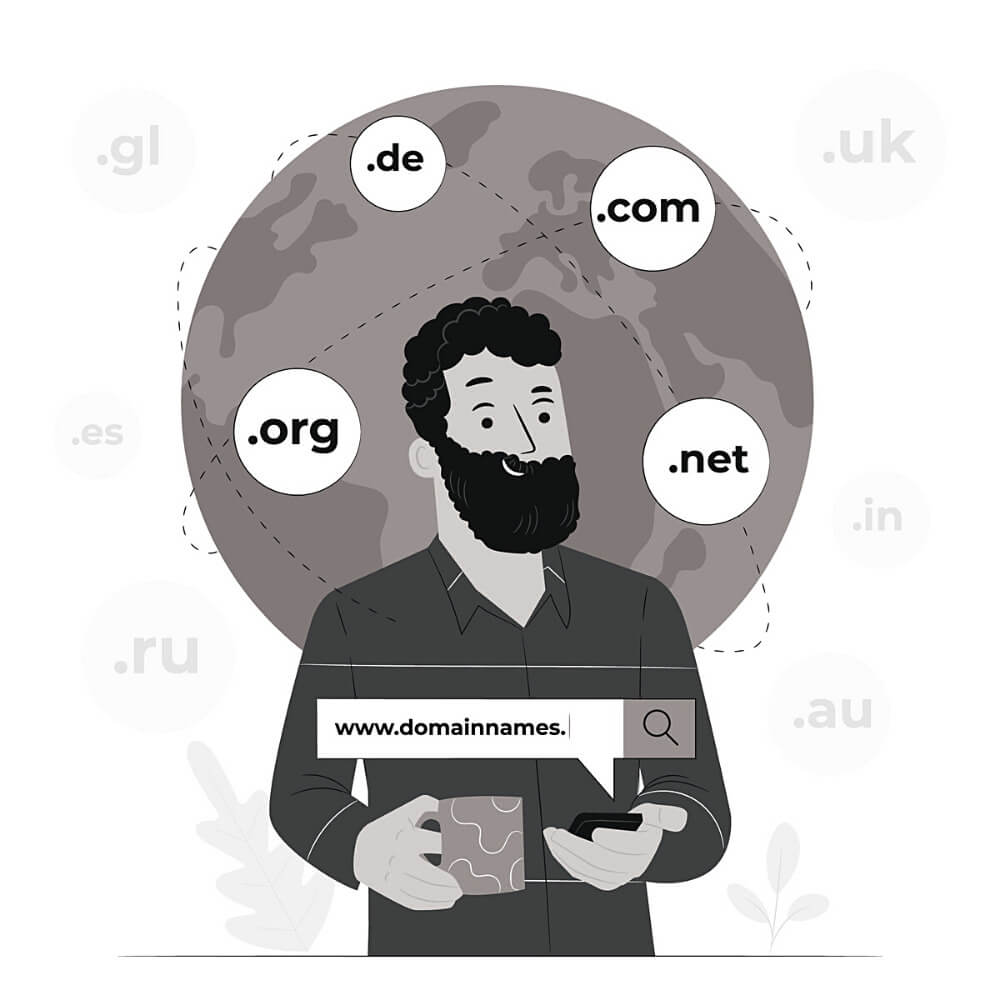-
Sales +603 2770 2833
- sales@webserver.com.my
What Is Domain Name and Example of Domain Name
Table of Contents
ToggleWhat Is Domain Name

Domain name definition is a unique name that identifies a website. This can be anything from your company letterhead to an address like ‘www.yourdomainname.com’.
The purpose of the domain name is so that when you type in www.yourdomainname.com, it will take you directly to the site associated with that email account or web server. Domain Name means the internet address of a website.
An internet address is a bit like an address on Earth. When you want to visit someone’s house or go somewhere else in the world, your driver takes you there following a route that has been planned out long before when the building was built.
The same goes for websites; they are constructed with specific routes laid down so users can find them easily online. Those routes have names – such as www.yourdomainname.com – which make it easy to locate where you need to be without having to memorize many different addresses.
The main difference between physical streets and websites is that while people live in one place, websites exist anywhere around the globe. This means that if you buy a domain name from us we will not only register it but also ensure it gets indexed quickly by search engines so visitors can find it easily.
The best part about it is that anyone else who has an interest in what you do will know where to find you just by typing in your domain name into their search engine. We aim to give our customers the best chance possible of being found by potential clients looking for products similar to those offered through the site.
A domain name can be any word or phrase you want to make your own online presence. There are many different types and levels of domains available for purchase so we will take a look at them all here.
Example of Domain Name

The Internet is made up of thousands upon thousands of computers located all over the planet connected together using cables and switches called routers and hubs. At its core, the internet is a collection of tubes containing data packets travelling along with these connections and into their destinations.
In order for data to move along these tubes effectively, each packet needs a unique identifier known as a ‘domain name’. A domain name consists of two parts separated by a dot; firstly, the top-level domain (TLD) refers to the type of organisation responsible for creating the particular domain name, followed by a second component consisting of subdomains within the TLD itself.
For instance, .com domain could stand for commercial whereas .com.my domain might refer to a company based in Malaysia. If you own a business then buying a domain may seem like a straightforward process; however, there are several factors to consider including whether you should use a generic .com, .net, .biz or even a country code TLD.
Types of Domain Name
Top Level Domains: There are currently six TLDs offered, namely; .com, .co, .edu, .info, .net, and .org. These include the most commonly known generic top-level domains (gTLD). You will notice these have ‘.com’, ‘.edu’, and etc. at the end of the name.
Second Level Domains: While not technically a subdomain of a gTLD, second-level domains (SLD) still fall under it. If you register an SLD, you will receive a unique email address associated with that domain, unlike standard gTLDs where only visitors see the actual web addresses.
Third Level Subdomains: Also called third-party registrations, high-level domains (HLD) allow registrants to obtain specific URLs within a larger domain. An example would be to register abc123.xyz as a subdomain of xyz.com. When someone visits abc123.xyz, they actually land on the page at xyw.com/abc123.xyz.
How Does Domain Name System (DNS) Work?
Short animated video explaining how the Domain Name System or DNS works.
Check Domain Name Availability
Use our Domain Finder tool to find your domain name in seconds!

WebServer.com.my, a business unit of a privately owned Acme Commerce Sdn Bhd was established in 1989. Specializes in the complex managed hosting services such as database hosting and mission critical application hosting since 1999.
-
Office Hour
+603 2770 2833 -
Extended
+603 2770 2803 -
Email
sales@webserver.com.my -
Technical Support
support@webserver.com.my
Switch The Language




